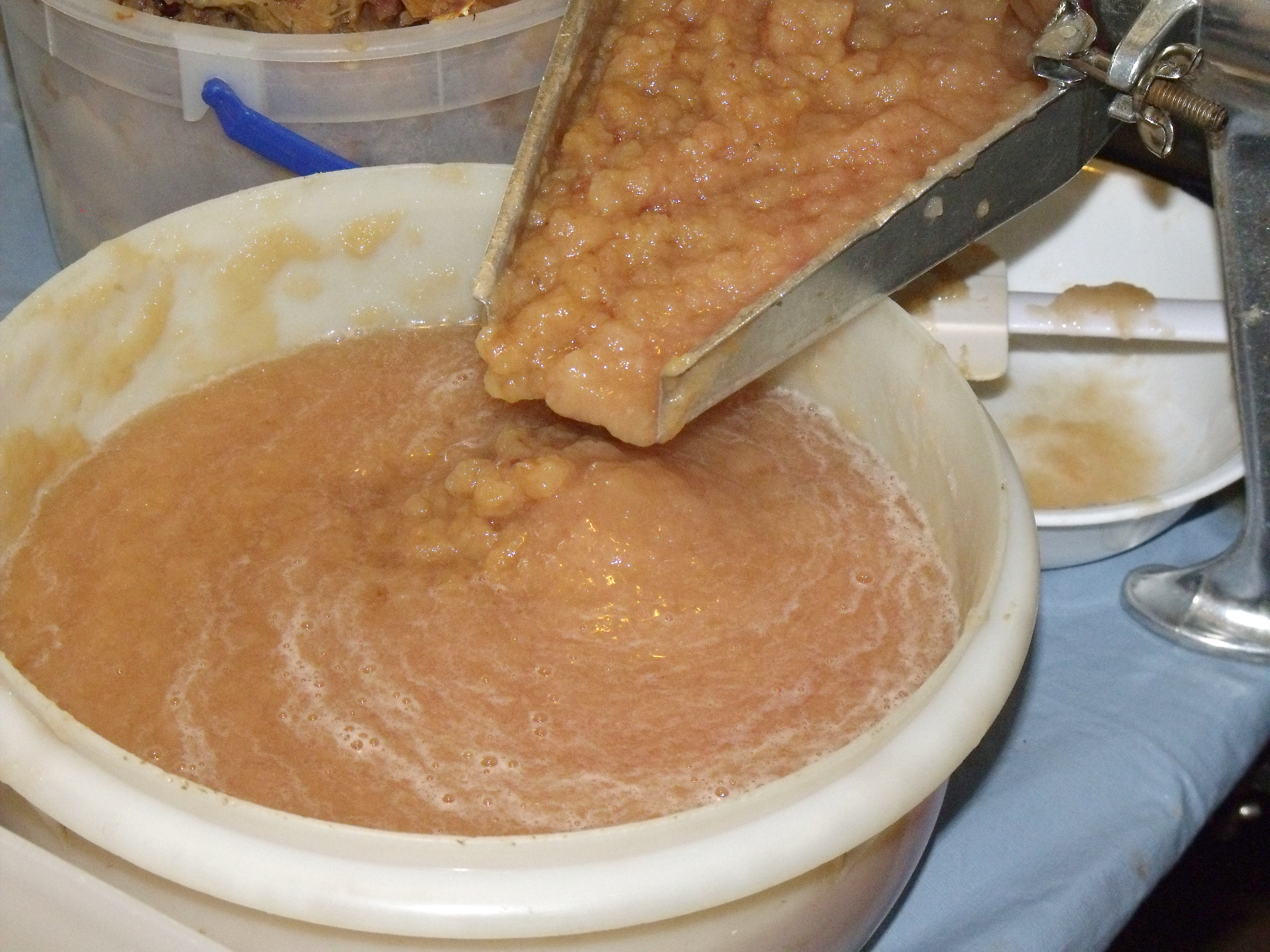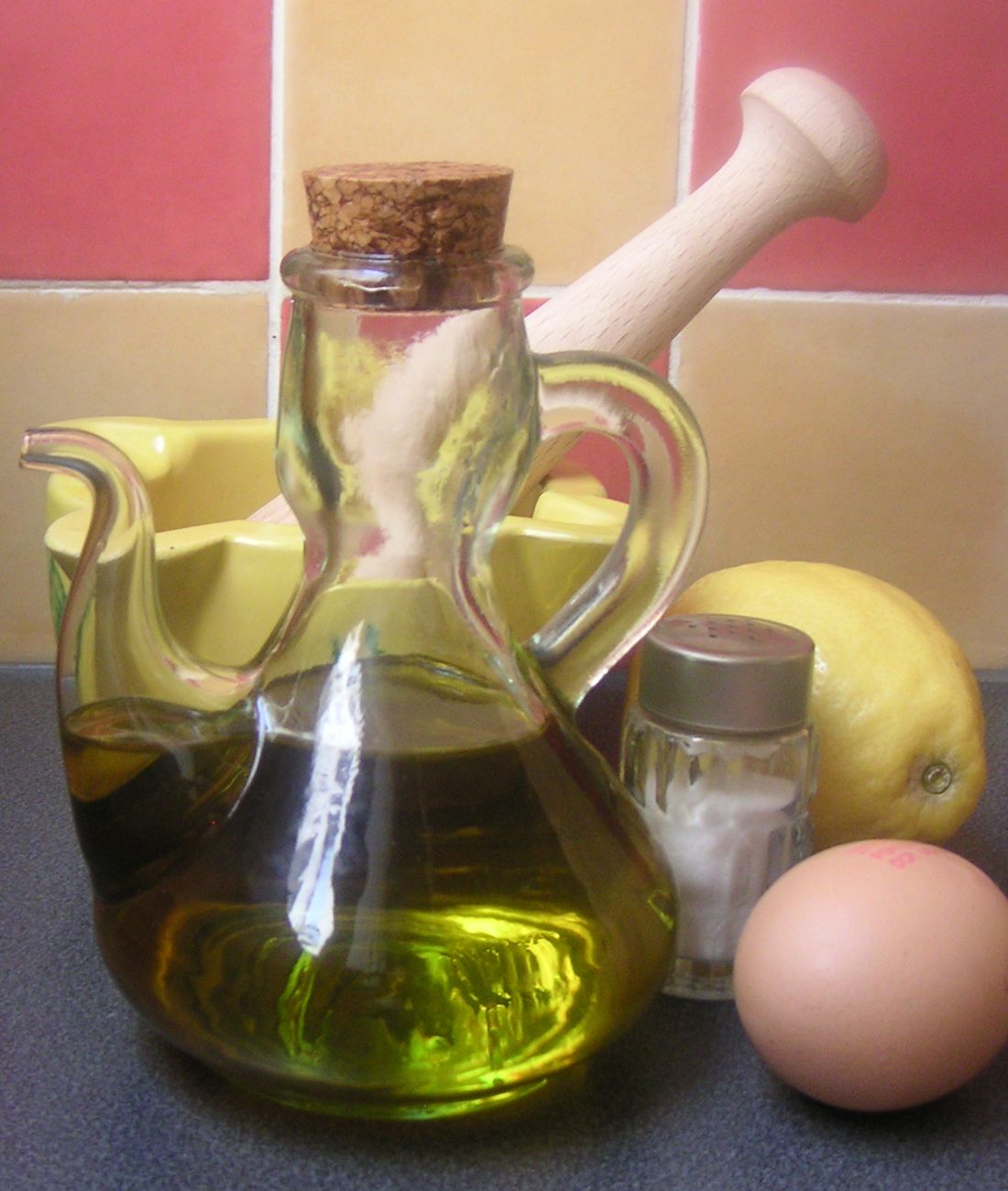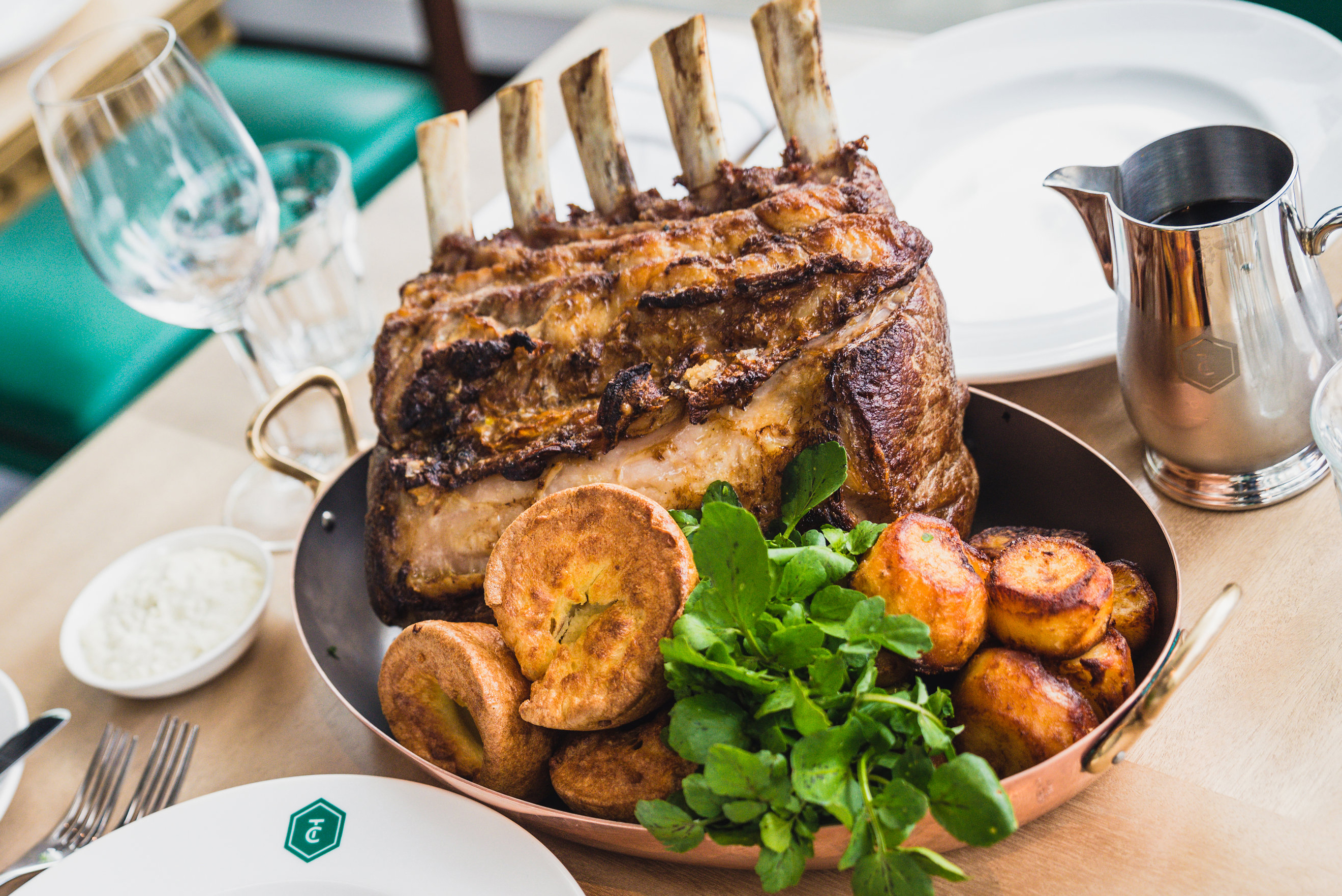|
Sauce
In cooking, a sauce is a liquid, cream, or semi-solid food, served on or used in preparing other foods. Most sauces are not normally consumed by themselves; they add flavor, moisture, and visual appeal to a dish. ''Sauce'' is a French word taken from the Latin ''salsa'', meaning ''salted''. Possibly the oldest recorded European sauce is garum, the fish sauce used by the Ancient Romans, while doubanjiang, the Chinese soy bean paste is mentioned in '' Rites of Zhou'' in the 3rd century BC. Sauces need a liquid component. Sauces are an essential element in cuisines all over the world. Sauces may be used for sweet or savory dishes. They may be prepared and served cold, like mayonnaise, prepared cold but served lukewarm like pesto, cooked and served warm like bechamel or cooked and served cold like apple sauce. They may be freshly prepared by the cook, especially in restaurants, but today many sauces are sold premade and packaged like Worcestershire sauce, HP Sauce, soy sauce ... [...More Info...] [...Related Items...] OR: [Wikipedia] [Google] [Baidu] |
Soy Sauce
Soy sauce (also called simply soy in American English and soya sauce in British English) is a liquid condiment of Chinese origin, traditionally made from a fermented paste of soybeans, roasted grain, brine, and '' Aspergillus oryzae'' or ''Aspergillus sojae'' molds. It is considered to contain a strong umami taste. Soy sauce in its current form was created about 2,200 years ago during the Western Han dynasty of ancient China, and it has spread throughout East and Southeast Asia where it is used in cooking and as a condiment. Use and storage Soy sauce can be added directly to food, and is used as a dip or salt flavor in cooking. It is often eaten with rice, noodles, and sushi or sashimi, or can also be mixed with ground wasabi for dipping. Bottles of soy sauce for salty seasoning of various foods are common on restaurant tables in many countries. Soy sauce can be stored at room temperature. History East Asia China Soy sauce (, ) is considered almost as old as soy p ... [...More Info...] [...Related Items...] OR: [Wikipedia] [Google] [Baidu] |
Fish Sauce
Fish sauce is a liquid condiment made from fish or krill that have been coated in salt and fermented for up to two years. It is used as a staple seasoning in East Asian cuisine and Southeast Asian cuisine, particularly Myanmar, Cambodia, Laos, Philippines, Thailand, and Vietnam. Some garum-related fish sauces have been used in the West since the Roman times. Due to its ability to add a savory umami flavor to dishes, it has been embraced globally by chefs and home cooks. The umami flavor in fish sauce is due to its glutamate content. Fish sauce is used as a seasoning during or after cooking, and as a base in dipping sauces. Soy sauce is regarded by some in the West as a vegetarian alternative to fish sauce though they are very different in flavor. History Asia Sauces that included fermented fish parts with other ingredients such as meat and soy bean were recorded in China, 2300 years ago. During the Zhou dynasty of ancient China, fish fermented with soybeans and salt was u ... [...More Info...] [...Related Items...] OR: [Wikipedia] [Google] [Baidu] |
Apple Sauce
Apple sauce or applesauce is a purée (not necessarily served as a true sauce) made of apples. It can be made with peeled or unpeeled apples and may be spiced or sweetened. Apple sauce is inexpensive and is widely consumed in North America and some parts of Europe. A wide range of apple varieties are used to make apple sauce, depending on the preference for sweetness or tartness. Formerly, sour apples were used to make savory apple sauce. Commercial versions of apple sauce are readily available at supermarkets and other retail outlets. Preparation Apple sauce is made by cooking apples with water or apple cider (fresh apple juice). More acidic apples will render a finer purée; the highly acidic Bramley apple creates a very fine purée. The apples may or may not be peeled. If they are not peeled, the peels and seeds are typically separated in a food mill. Sugar and spices such as cinnamon, allspice, and even Red Hot candies may be added for flavor. Lemon juice, citric acid, ... [...More Info...] [...Related Items...] OR: [Wikipedia] [Google] [Baidu] |
Apple Sauce
Apple sauce or applesauce is a purée (not necessarily served as a true sauce) made of apples. It can be made with peeled or unpeeled apples and may be spiced or sweetened. Apple sauce is inexpensive and is widely consumed in North America and some parts of Europe. A wide range of apple varieties are used to make apple sauce, depending on the preference for sweetness or tartness. Formerly, sour apples were used to make savory apple sauce. Commercial versions of apple sauce are readily available at supermarkets and other retail outlets. Preparation Apple sauce is made by cooking apples with water or apple cider (fresh apple juice). More acidic apples will render a finer purée; the highly acidic Bramley apple creates a very fine purée. The apples may or may not be peeled. If they are not peeled, the peels and seeds are typically separated in a food mill. Sugar and spices such as cinnamon, allspice, and even Red Hot candies may be added for flavor. Lemon juice, citric acid, ... [...More Info...] [...Related Items...] OR: [Wikipedia] [Google] [Baidu] |
Mayonnaise
Mayonnaise (; ), colloquially referred to as "mayo" , is a thick, cold, and creamy sauce or dressing commonly used on sandwiches, hamburgers, composed salads, and French fries. It also forms the base for various other sauces, such as tartar sauce, fry sauce, remoulade, salsa golf, and rouille. Mayonnaise is an emulsion of oil, egg yolk, and an acid, either vinegar or lemon juice; there are many variants using additional flavorings. The color varies from near-white to pale yellow, and its texture from a light cream to a thick gel. Commercial eggless imitations are made for those who avoid chicken eggs because of egg allergies, to limit dietary cholesterol, or because they are vegans. History ''Mayonnaise'' is a French cuisine appellation that seems to have appeared for the first time in 1806. The hypotheses invoked over time as to the origin(s) of mayonnaise have been numerous and contradictory. Most hypotheses do however agree on the geographical origin of the sauce ... [...More Info...] [...Related Items...] OR: [Wikipedia] [Google] [Baidu] |
HP Sauce
HP Sauce is a British brown sauce, the main ingredients of which are tomatoes and tamarind extract. It was named after London's Houses of Parliament. After making its first appearance on British dinner tables in the late 19th century, HP Sauce went on to become an icon of British culture. It was the best-selling brand of brown sauce in the UK in 2005, with 73.8% of the retail market. The sauce was originally produced in the United Kingdom, but is now made by Heinz in the Netherlands. HP Sauce has a tomato base, blended with malt vinegar and spirit vinegar, sugars (molasses, glucose-fructose syrup, sugar), dates, cornflour, rye flour, salt, spices and tamarind. It is used as a condiment with hot and cold savoury food, and as an ingredient in soups and stews. The picture on the front of the bottle is a selection of London landmarks including Elizabeth Tower, the Palace of Westminster, and Westminster Bridge. History Frederick Gibson Garton had a grocers and provisions shop on M ... [...More Info...] [...Related Items...] OR: [Wikipedia] [Google] [Baidu] |
Garum
Garum is a fermented fish sauce that was used as a condiment in the cuisines of Phoenicia, ancient Greece, Rome, Carthage and later Byzantium. Liquamen is a similar preparation, and at times they were synonymous. Although garum enjoyed its greatest popularity in the Western Mediterranean and the Roman world, it was earlier used by the Greeks. Like modern fermented fish sauce and soy sauce, garum was a rich source of umami flavoring due to the presence of glutamates. It was used along with murri in medieval Byzantine and Arab cuisine to give a savory flavor to dishes. Murri may derive from garum. Manufacture and export Pliny the Elder and Isidore of Seville derive the Latin word from the Greek (), a food named by Aristophanes, Sophocles, and Aeschylus. Garos may have been a type of fish, or a fish sauce similar to garum. Pliny stated that garum was made from fish intestines, with salt, creating a liquor, the garum, and the fish paste named (h)allec or allex (similar to , ... [...More Info...] [...Related Items...] OR: [Wikipedia] [Google] [Baidu] |
Bread Sauce
A bread sauce is a British and Irish warm or cold sauce made with milk, which is thickened with bread crumbs, typically eaten with roast chicken or turkey. Recipe The basic recipe calls for milk and onion with breadcrumbs and butter added as thickeners, seasoned with nutmeg, clove, bay leaf, pepper, and salt. History A survivor of the medieval bread-thickened sauces, the traditional British bread sauce is made with milk, butter or cream, and bread crumbs, flavoured with onion, salt, cloves, mace, pepper, and bay leaf, with the fat from roasting often added as well. It typically accompanies domestic fowl such as turkey or chicken. The use of slightly stale bread is optimal. Bread sauce can be traced back to at least as early as the medieval period, when cooks used bread as a thickening agent for sauces. The utilisation of bread in this way probably comes from cooks wanting to use up their stale bread who discovered that it could be incorporated within sauces to make them thick ... [...More Info...] [...Related Items...] OR: [Wikipedia] [Google] [Baidu] |
Ketchup
Ketchup or catsup is a table condiment with a sweet and tangy flavor. The unmodified term ("ketchup") now typically refers to tomato ketchup, although early recipes used egg whites, mushrooms, oysters, grapes, mussels, or walnuts, among other ingredients. Tomato ketchup is made from tomatoes, sugar, and vinegar, with seasonings and spices. The spices and flavors vary, but commonly include onions, allspice, coriander, cloves, cumin, garlic, and mustard, and sometimes include celery, cinnamon, or ginger. The market leader in the United States (60% market share) and the United Kingdom (82%) is Heinz Tomato Ketchup. Tomato ketchup is most often used as a condiment to dishes that are usually served hot and are fried or greasy: french fries and other potato dishes, hamburgers, hot dogs, chicken tenders, hot sandwiches, meat pies, cooked eggs, and grilled or fried meat. Ketchup is sometimes used as the basis for, or as one ingredient in, other sauces and dressings, and the flavo ... [...More Info...] [...Related Items...] OR: [Wikipedia] [Google] [Baidu] |
Mint Sauce
Mint sauce is a green sauce originating in the United Kingdom, made from finely chopped spearmint (Mentha spicata) leaves soaked in vinegar, and a small amount of sugar. Lime (fruit), Lime juice is sometimes added. The sauce has a watery consistency and is flecked with broken leaves. In British cuisine, British and Irish cuisine it is often served as a condiment for Roasting, roast Lamb (food), lamb, or any other roast meats, or, in some areas, mushy peas. It is normally bought ready-made, and is easy to find in British food shops. Mint jelly, thicker and sweeter, is an alternative for lamb, also normally bought ready-made. Similar herb-based green sauces were common throughout Medieval Europe, with the use of mint being more common in French cuisine, French and Italian cuisine of the period than that of the English cuisine, English; however, they became less common and mostly died out as Europe entered the Modern Era.''Cooking in Europe, 1250-1650'' by Ken Albala, Greenwood P ... [...More Info...] [...Related Items...] OR: [Wikipedia] [Google] [Baidu] |
Tzatziki IMGP1480
Tzatziki ( el, τζατζίκι), also known as tarator or cacık (), is a dip, soup, or sauce found in the cuisines of Southeast Europe and the Middle East. It is made of salted strained yogurt or diluted yogurt mixed with cucumbers, garlic, salt, olive oil, sometimes with vinegar or lemon juice, and herbs such as dill, mint, parsley and thyme. It is served as a cold appetizer (''mezze''), a side dish, and as a sauce for souvlaki and gyros sandwiches and other foods. History ''Tarator'' was the name of a dish made of ground walnuts and vinegar in the Ottoman Empire. Dishes of various preparations in the region, including dips, salads, and sauces, acquired the name. In the Levant, ''taratur'' is a sauce based on tahini, while in Turkey and the Balkans it came to mean a combination of yogurt and cucumbers, sometimes with walnuts. It has become a traditional part of meze. Etymology The word ''tzatziki'' appeared in English around the mid-20th century as a loanword from Modern ... [...More Info...] [...Related Items...] OR: [Wikipedia] [Google] [Baidu] |
Roast Dinner
A Sunday roast or roast dinner is a traditional meal of British and Irish origin. Although it can be consumed throughout the week, it is traditionally consumed on Sunday. It consists of roasted meat, roasted potatoes and accompaniments such as Yorkshire pudding, stuffing, gravy, and condiments such as apple sauce, mint sauce, or redcurrant sauce. A wide range of vegetables can be served as part of a roast dinner, such as broccoli, Brussels sprouts, carrots, cauliflower, parsnips, or peas, which can be boiled, steamed, or roasted alongside the meat and potatoes. Mashed potatoes are also a frequent accompaniment. The Sunday roast's prominence in British culture is such that in a UK poll in 2012 it was ranked second in a list of things people love about Britain. Other names for this meal include ''Sunday lunch'', ''Sunday dinner'', ''roast dinner,'' and ''full roast''. The meal is often comparable to a less grand version of a traditional Christmas dinner. Besides being ser ... [...More Info...] [...Related Items...] OR: [Wikipedia] [Google] [Baidu] |









_-_(cropped).jpg)


